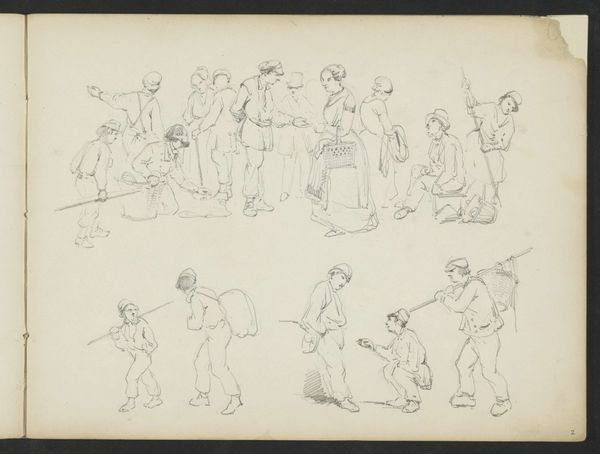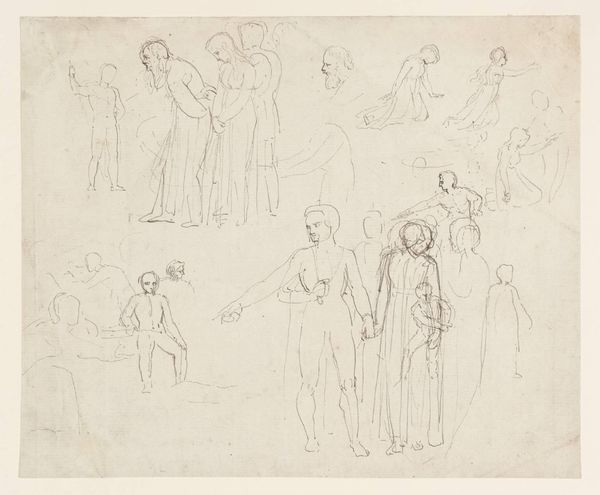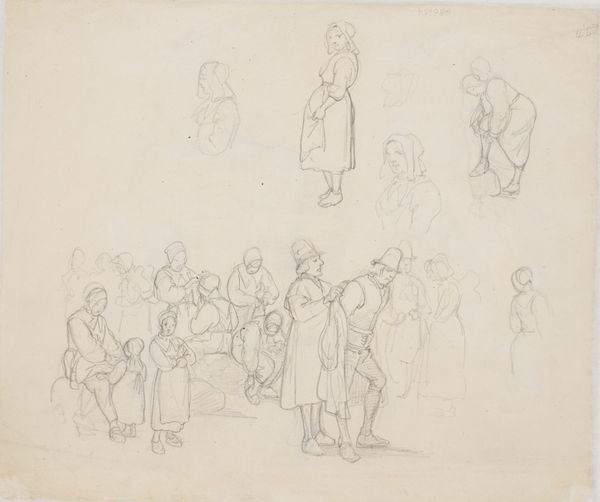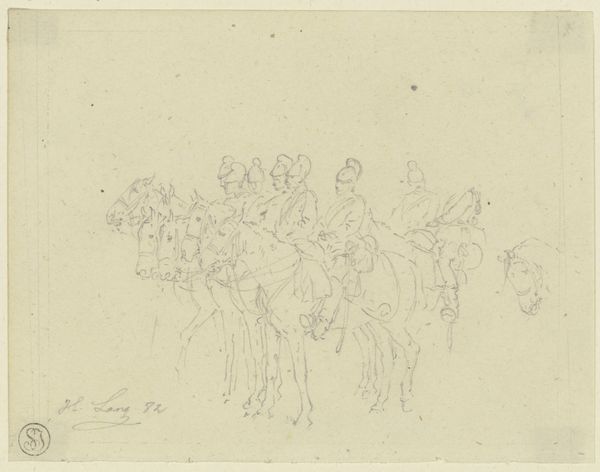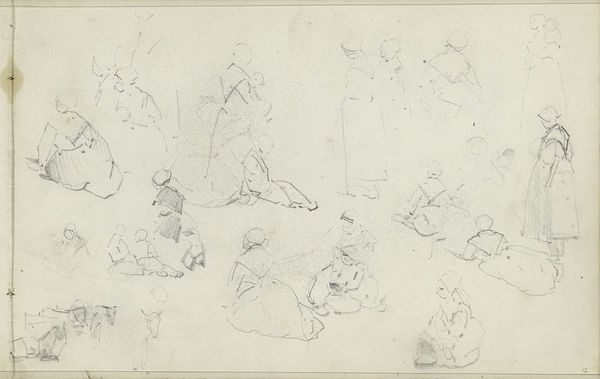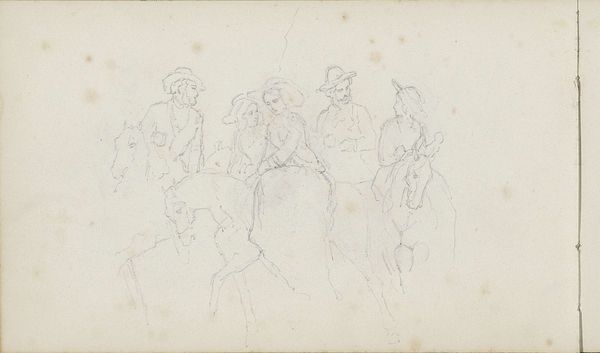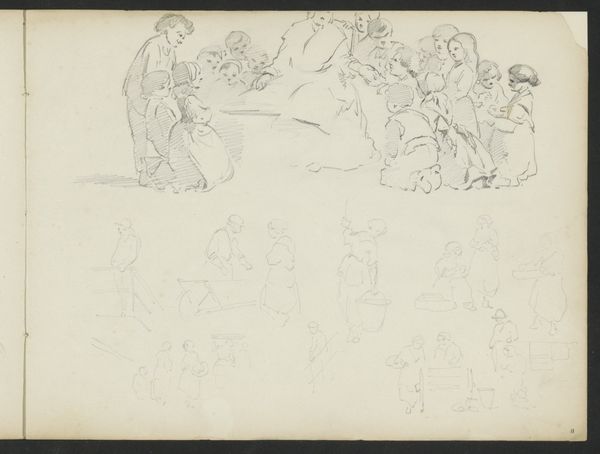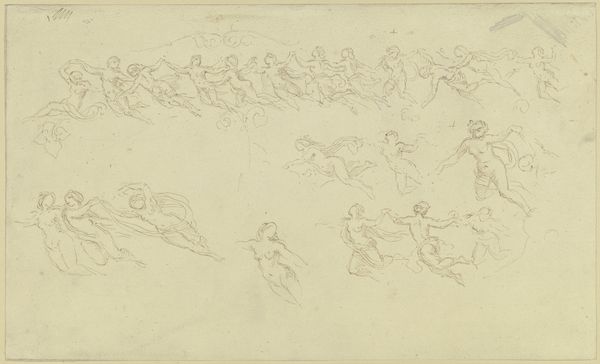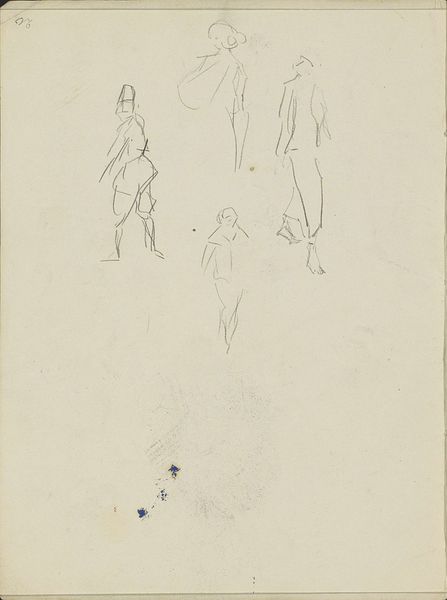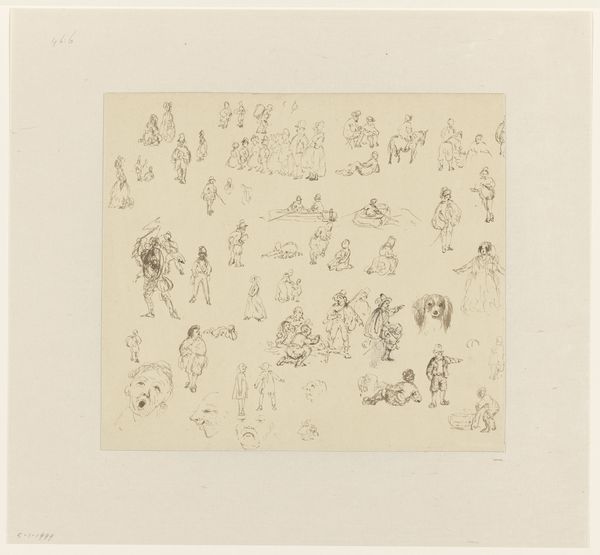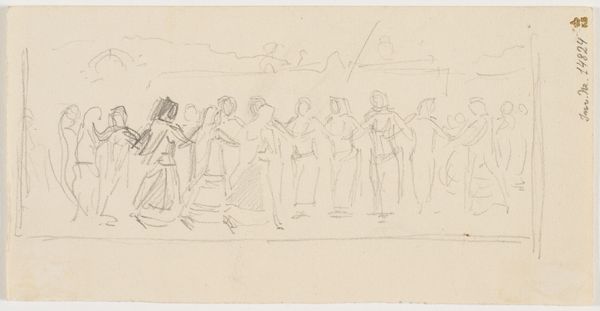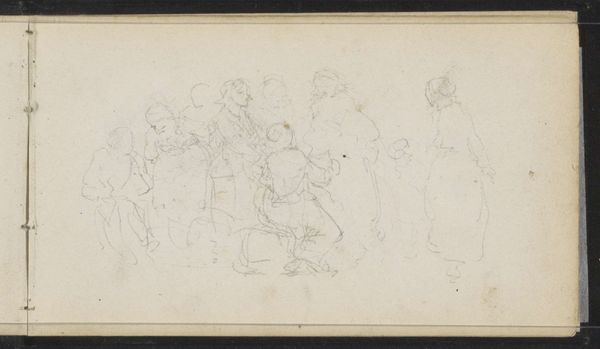
Copyright: Rijks Museum: Open Domain
Curator: This delicate pencil drawing by Adrianus Eversen, titled "Figuren in verschillende houdingen," or Figures in Various Poses, offers a fleeting glimpse into 19th-century life. What’s your immediate response to it? Editor: It feels ephemeral, like a half-remembered dream. The barely-there lines suggest a crowd, but without strong definition, they almost melt into the paper. Is this meant to capture a fleeting moment? Curator: Exactly. It reads like a study or sketch for a larger, perhaps unrealized, genre painting. These sketches often functioned as a repository of ideas, figures, and compositions that artists could draw upon later. The figures, rendered with a simple pencil on paper, point toward the Romantic movement, and offer a window into a simpler past. Editor: Simpler for whom? I find myself looking for cues about their social standing. There’s a casualness to the grouping that is evocative, yet knowing their specific roles or relationships in society is lost. Are they simply ‘figures’, abstracted away from the nuances of the class and cultural positions that inform interactions in that time? Curator: Interesting point. Eversen's use of the pencil, with its inherent qualities of softness and transience, adds to a certain anonymity, yes. These archetypes are relatable through the ages because they portray the collective societal values of family and community. Editor: Perhaps. Or it might be intentionally obscuring something else. Erasure is powerful, too, in its historical implications. By presenting these people without specifics, does Eversen deflect or even undermine our expectations around the display of status? I can see how their lack of distinction becomes a mirror, then, where one generation recognizes another. Curator: You see a reflection of contemporary anxieties, maybe a commentary. For me, the drawing transcends those specifics. It speaks to our shared human experiences across time, and reveals underlying, immutable conditions. That, I believe, is its power. Editor: A provocative reminder to seek not just continuity but also transformation in these traces.
Comments
No comments
Be the first to comment and join the conversation on the ultimate creative platform.
